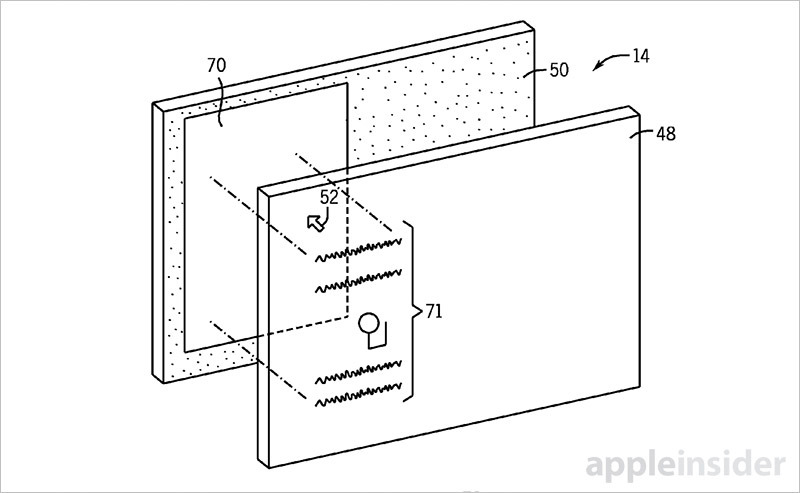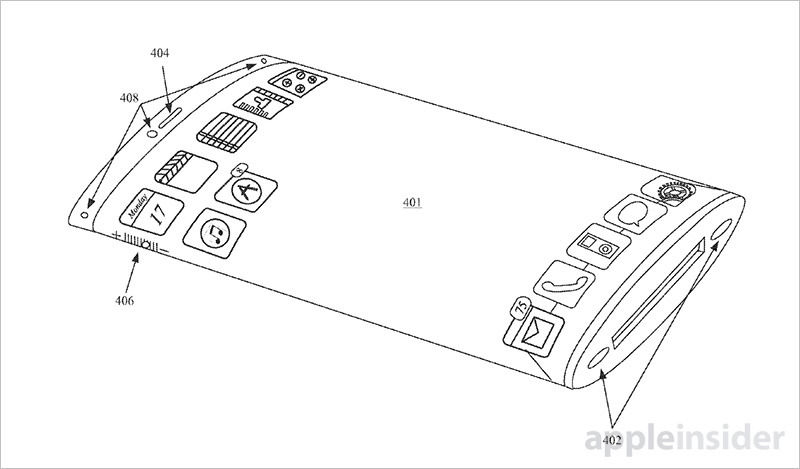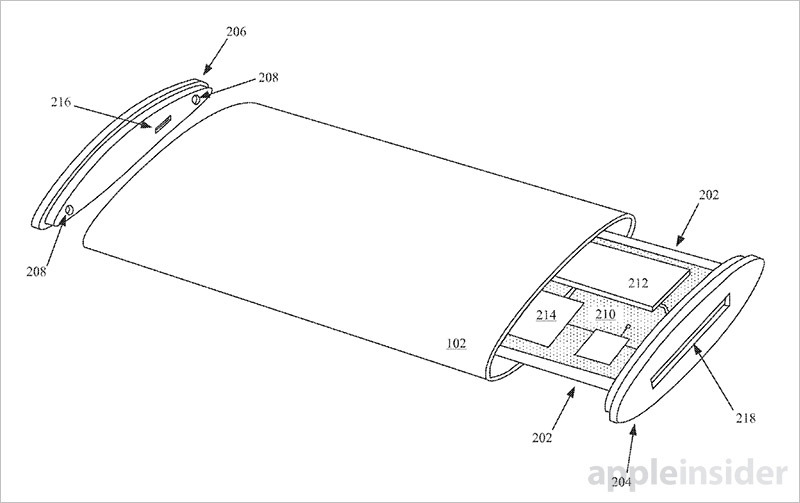Apple on Tuesday won a pair of patents relating to advanced mobile devices including a property covering transparent augmented reality devices and IP detailing a mobile electronic device with flexible wrap-around display.
Granted by the U.S. Patent and Trademark Office, Apple's U.S. Patent No. 9,367,093 for a "Transparent electronic device" is a variation of a augmented reality concept AppleInsider first reported in 2014.
The invention details a method by which one or more touch sensitive displays are integrated into a transparent substrate or device window, thereby allowing users to see digitally generated images overlaid on top of real-world objects. In some embodiments only a portion of the display is transparent, while other representations call for a completely see-through window. Display circuitry either borders the transparent screen, masked from view with opaque paint, or located in another portion of the device chassis.
As with other augmented reality systems, Apple's design can be used to provide valuable enhancements to objects in the surrounding environment. At a museum, for example, the handheld device might overlay information about a given painting, or specific parts of a painting, on its transparent screen.
Other embodiments incorporate two displays laid out one atop the other which, when each is outputting a generated graphic, creates the illusion of a three-dimensional image.
Apple's transparent AR device patent was first filed for in November 2014 and credits Aleksandar Pance as its inventor.
Next up is Apple's U.S. Patent No. 9,367,095 for an "Electronic device with wrap around display," a piece of IP that details a futuristic handset with flexible AMOLED screen, all-glass construction and other exotic components.
As AppleInsider reported in 2013, the design presents a great deal of screen real estate in a compact package. To maximize surface area, Apple proposes a seamless glass chassis into which a flexible display is fitted and subsequently "unrolled." Operational components are disposed on a central logic board positioned along the phone's center axis, obscured from view.
In some embodiments the display is fashioned into a continuous band capable of displaying images, videos and other graphical user interface elements at any point along the chassis. As the screen wraps around the entire device it is necessary to determine where, exactly, the user is looking to properly present onscreen graphics and UI assets. To do so, Apple enlists the help of face tracking technology that syncs the GUI to a user's gaze.
Like the patent mentioned above, Apple includes contingencies for creating a three-dimensional effect through multiple layers of transparent screens.
As granted today, Apple's patent for a device with wrap-around display was first filed for in April 2015 and credits Scott A. Myers as its inventor.
 Mikey Campbell
Mikey Campbell









-m.jpg)






 Charles Martin
Charles Martin
 Christine McKee
Christine McKee
 Wesley Hilliard
Wesley Hilliard
 Malcolm Owen
Malcolm Owen
 Andrew Orr
Andrew Orr
 William Gallagher
William Gallagher
 Sponsored Content
Sponsored Content








9 Comments
Apple didn't win patents they where granted the patents. Huge difference!
I'm eager for Apple's R&D into VR/AR to leave the lab and enter the public eye.
Oh dear, looks like prior art.
https://www.youtube.com/watch?time_continue=40&v=SjulpqbDF6I